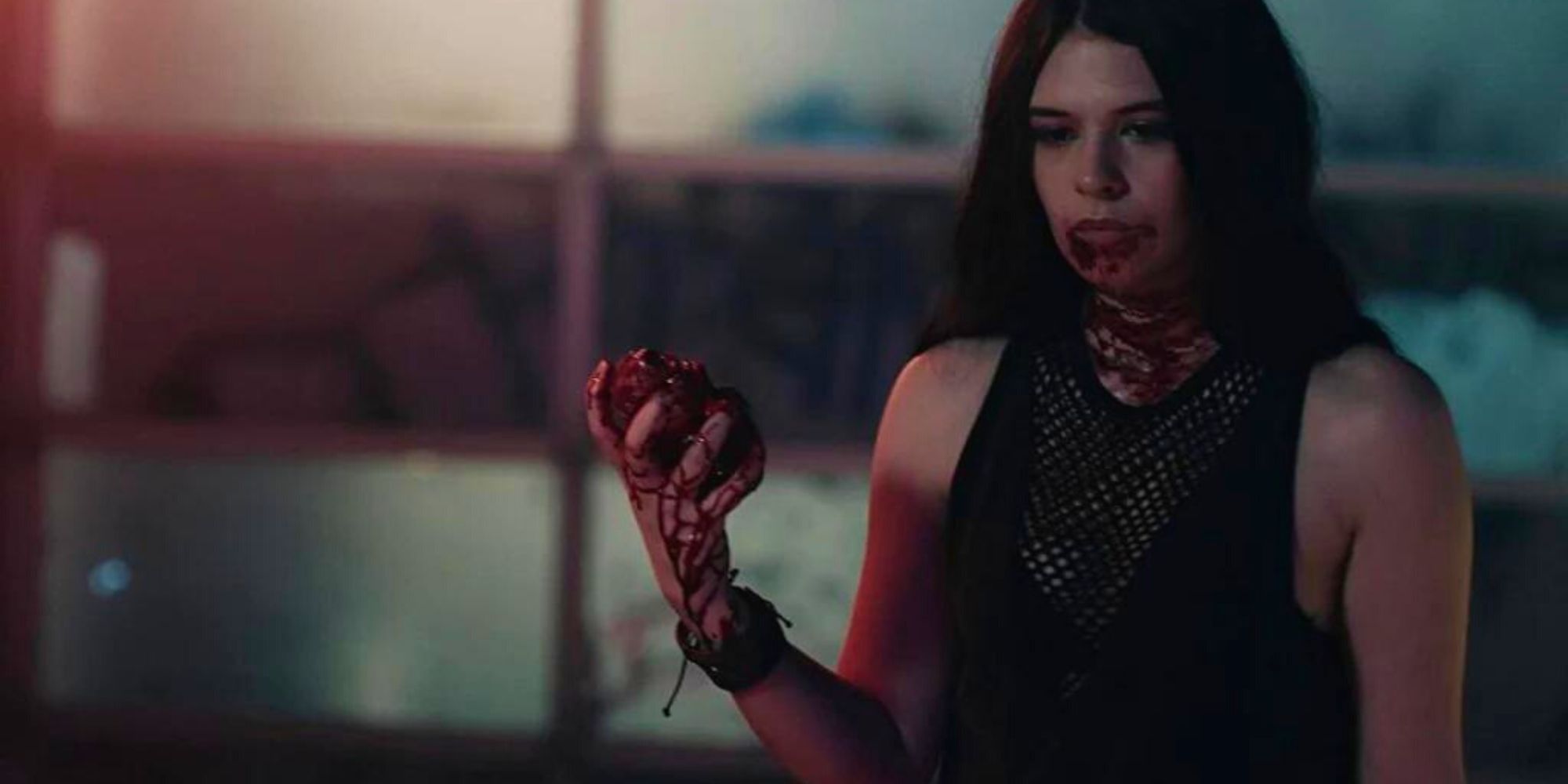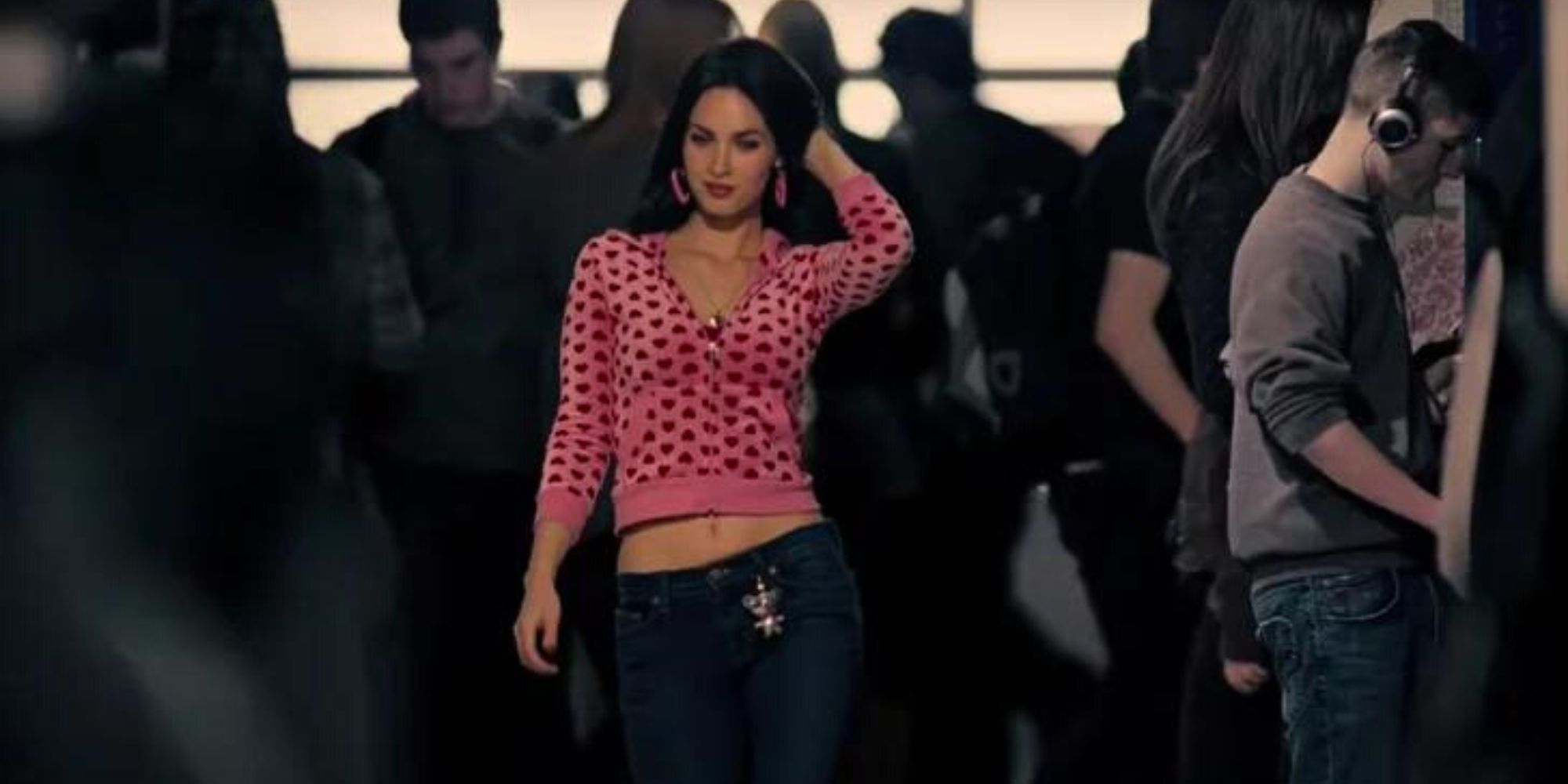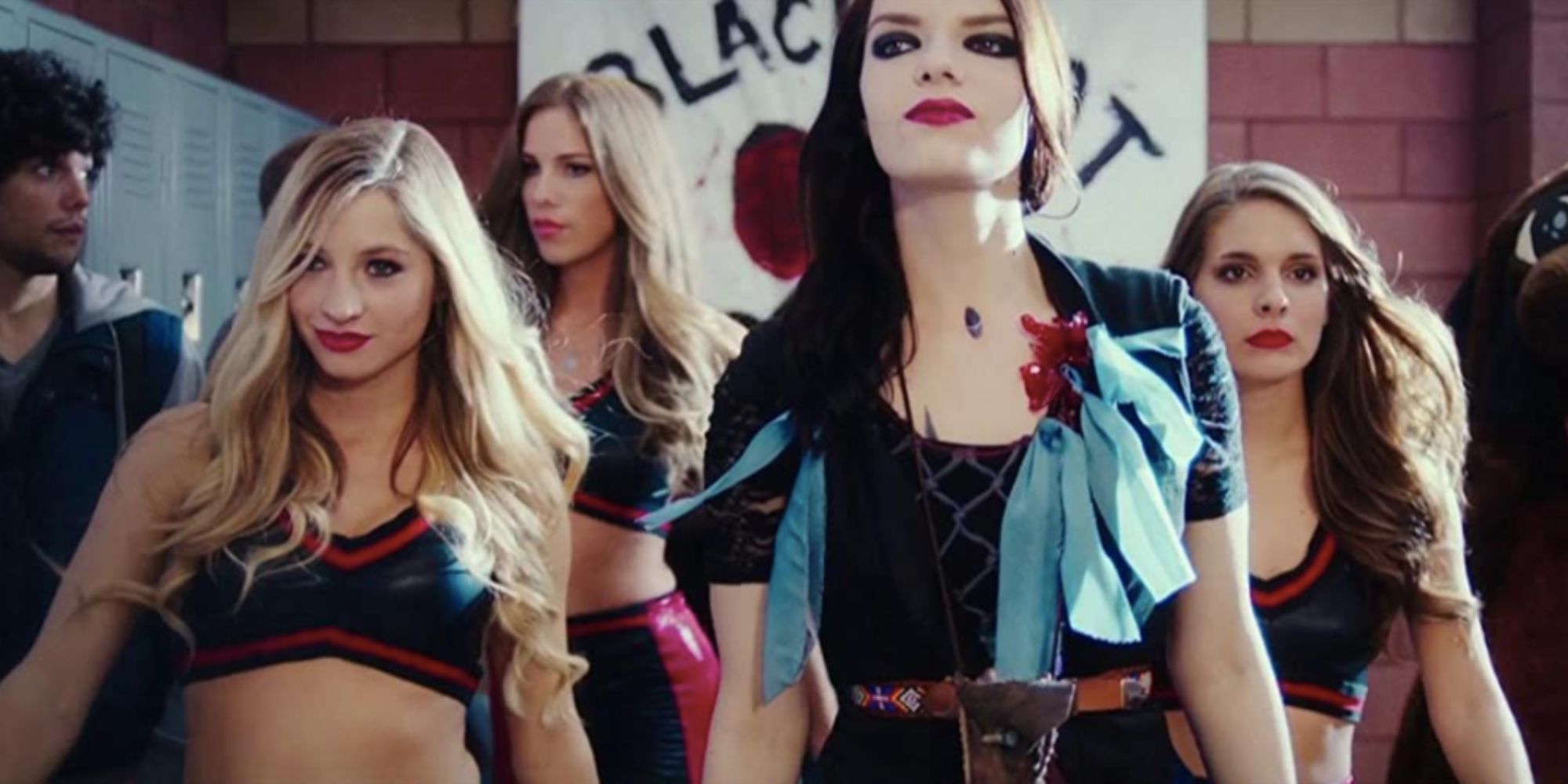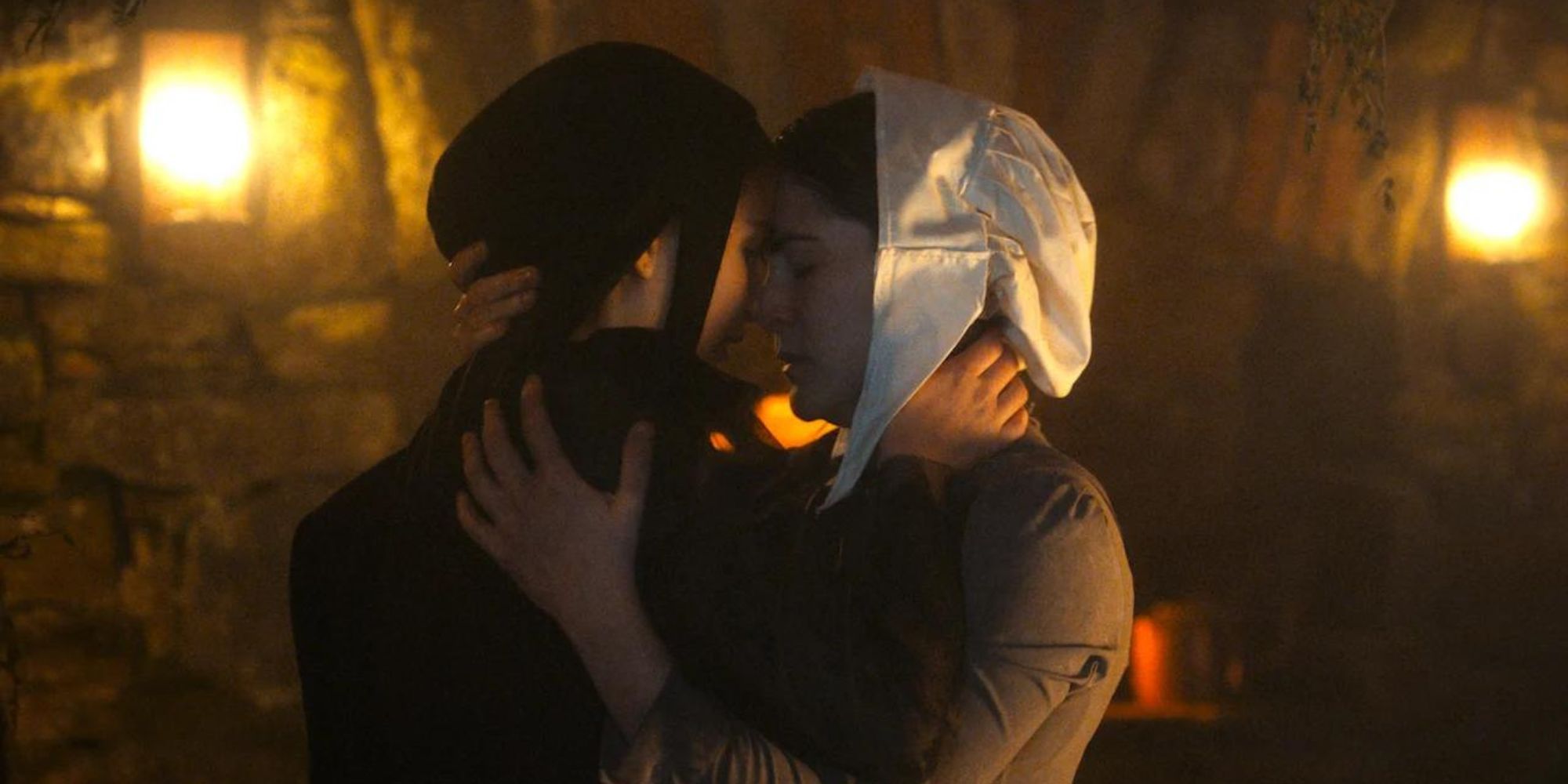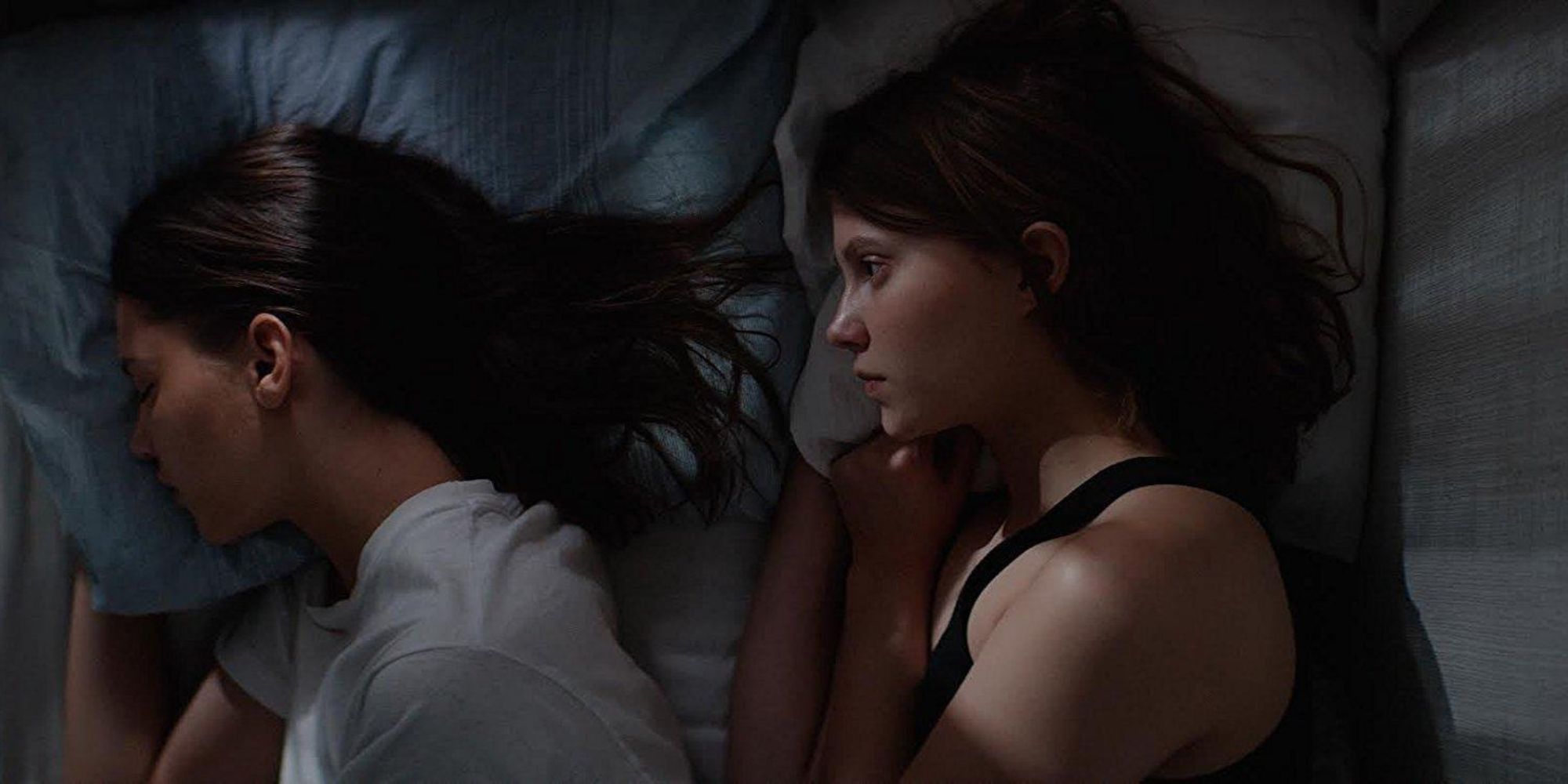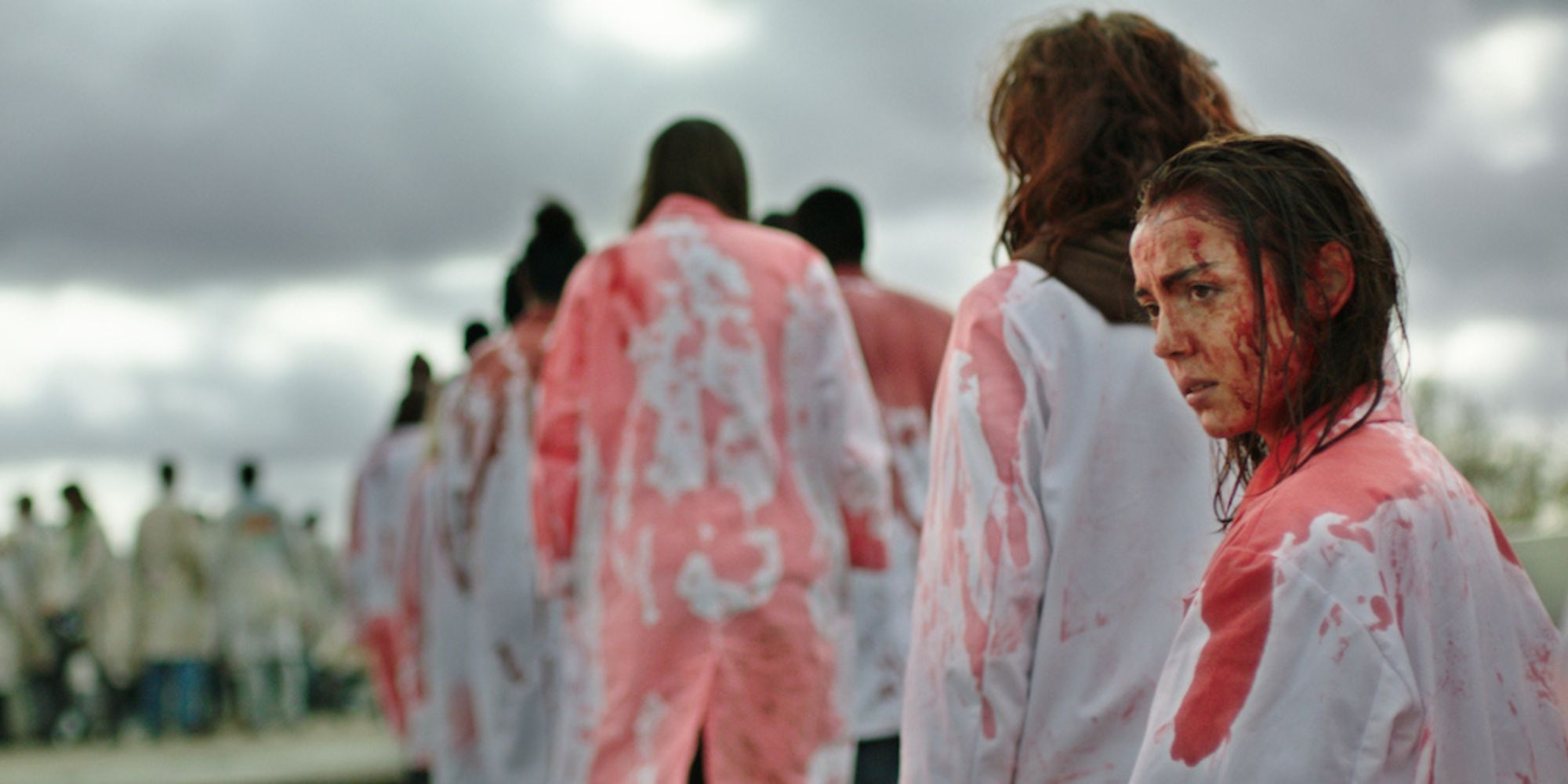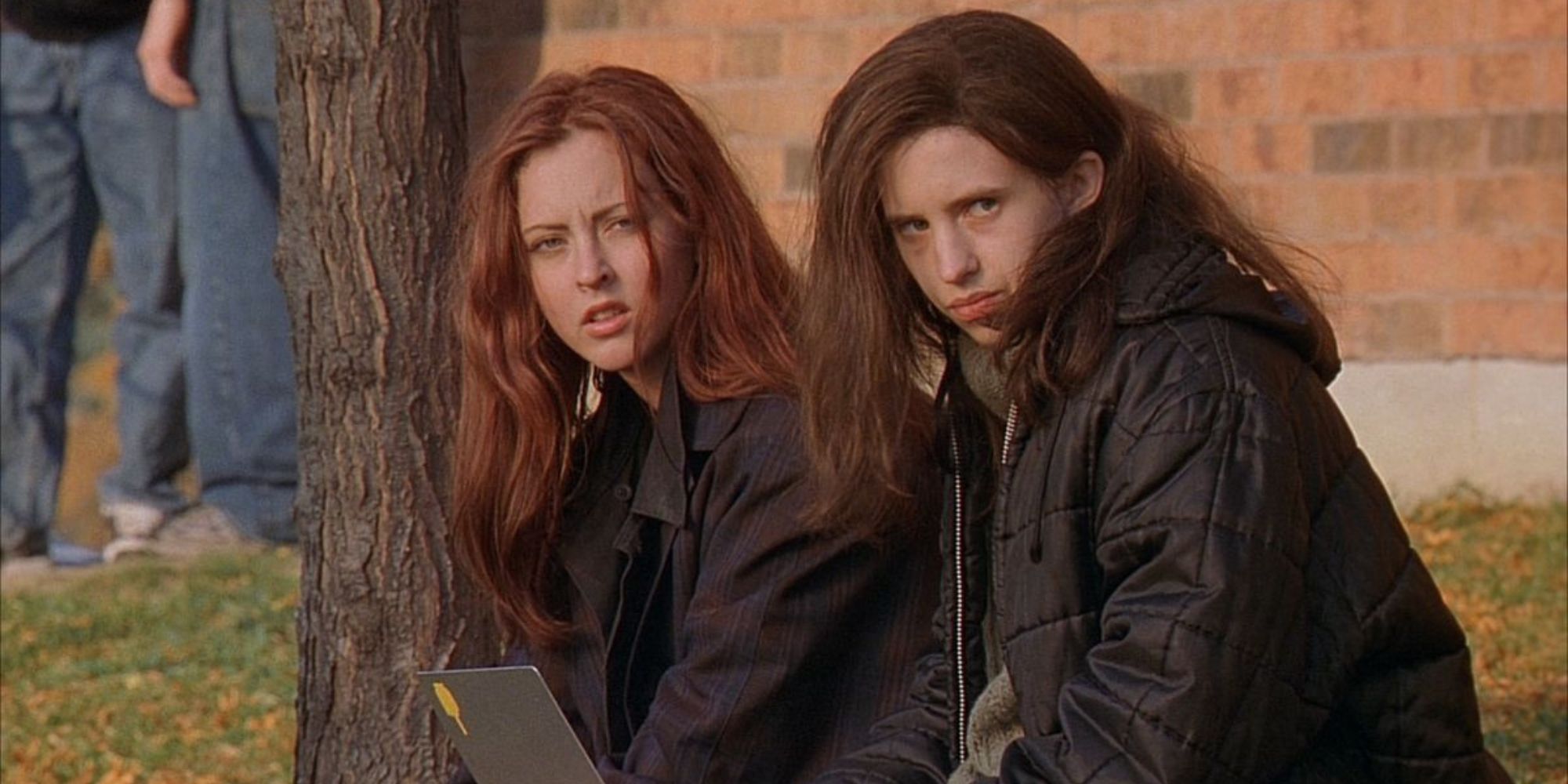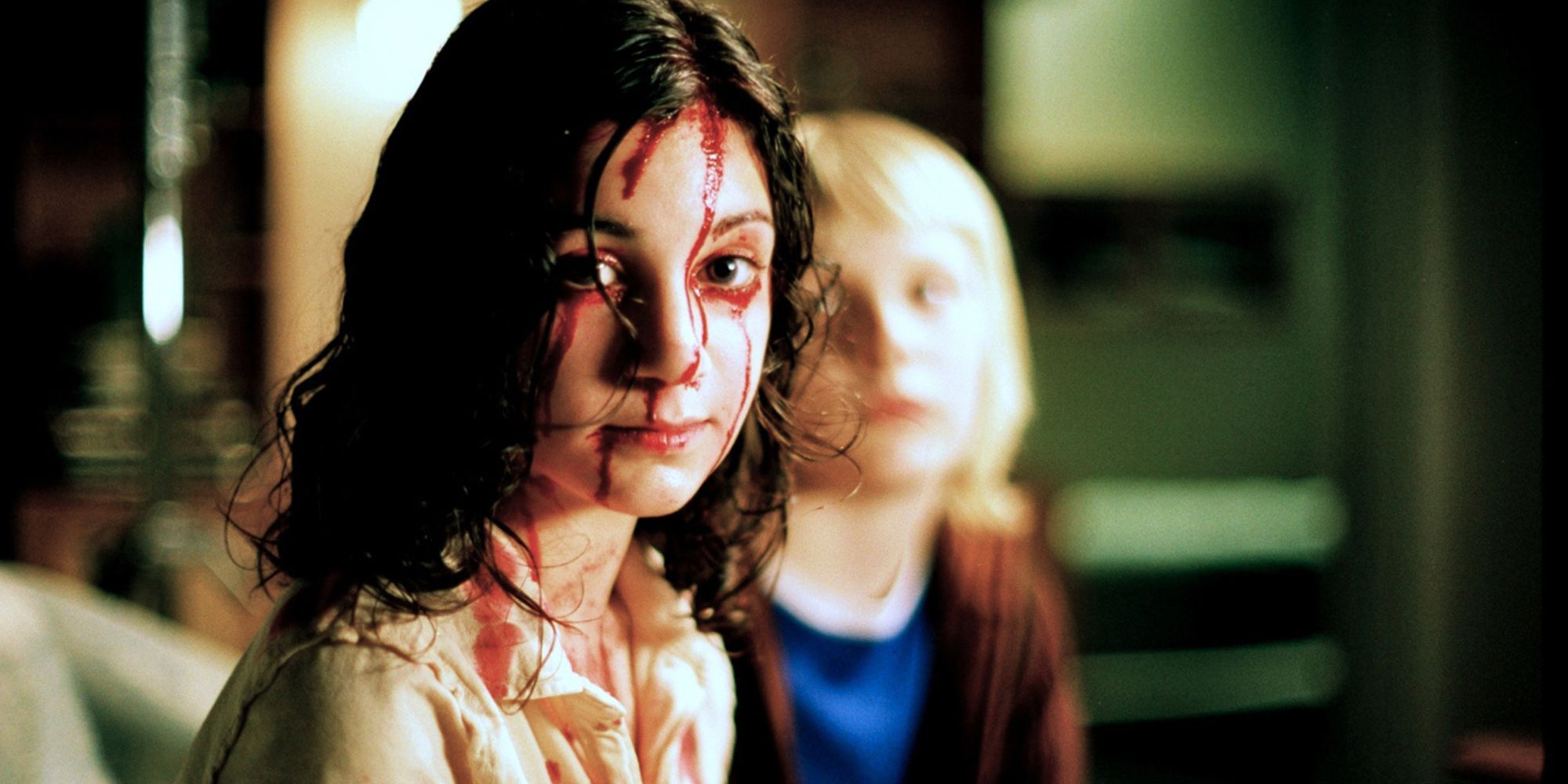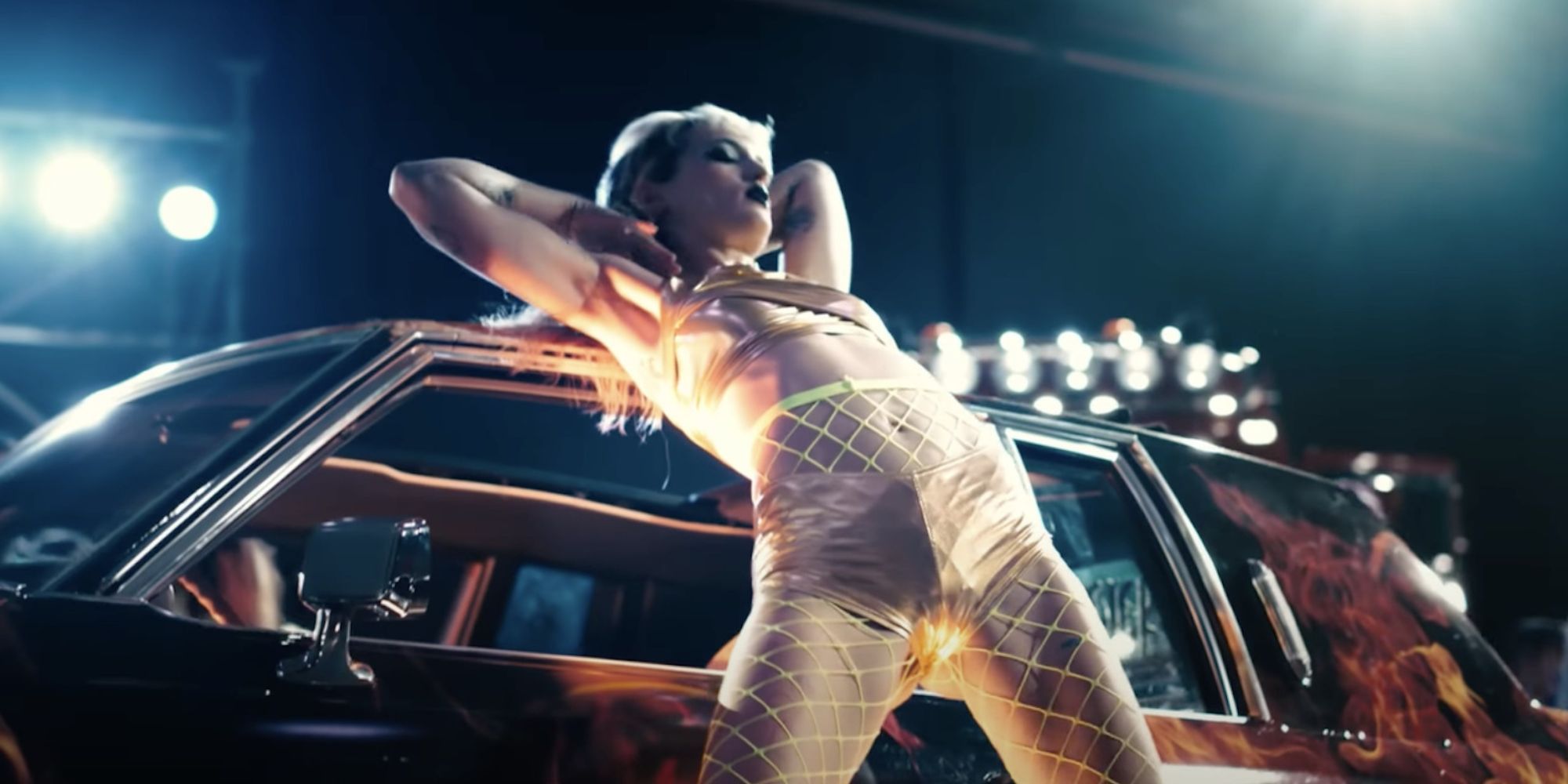Horror has historically been a genre that sought to preserve society's conservative values. The monster of horror fiction typically represents the counter-cultural drives of society that will either be assimilated or destroyed by the film's end.
While queer subtext has been engrained in horror cinema since its conception, how queerness is represented has evolved. What once was considered a threat to society — such as the dangerously seductive sapphic vampiress trope — has been recontextualized as the horror genre has become. Queer representation in contemporary horror cinema has shifted its perspective in favor of the Other, displacing the fear onto the real horrors of society.
‘Bit’ (2019)
Laurel (Nicole Maines) is a trans woman on summer vacation in Los Angeles. During a night out clubbing, Laurel encounters a group of young women who welcome her into their posse, only to reveal that they are vampires.
Brad Michael Elmore’s Bit is a queer feminist tale that follows the vampire posse as they clean up the streets of LA of predatory men. Satisfyingly empowering, Bit uses its vampirism as a superpower that empowers its women to feel safe while being creatures of the night.
‘Jennifer’s Body’ (2009)
Jennifer Check (Megan Fox) is a popular cheerleader at Devil’s Kettle High School who has been best friends with Needy (Amanda Seyfried) since childhood. After a satanic sacrifice goes wrong, Jennifer transforms into a succubus who needs to feed on flesh to survive — a hunger she satisfies by feasting on her male classmates.
Directed by Karyn Kusama, Jennifer’s Body is a horror film that is self-aware of the male gaze. Casting Fox as the dangerously seductive succubus only two years after her unnecessarily sexualized performance in Michael Bay’s Transformers is a clear response to how men objectify women.
‘All Cheerleaders Die’ (2013)
Mäddy (Caitlin Stasey) is a recent member of the Blackfoot High cheerleading team. When the cheer squad wakes up unscathed the morning after being in a lethal car accident at the hands of the football team, the girls seek their revenge on the football players one by one.
Chris Sivertson and Lucky McKee’s film All Cheerleaders Die critiques and subvert the sexist power structure of high school cliques. As a classic tale of revenge, All Cheerleaders Die is a satisfying portrayal of queer female power aware of how society and the horror genre has treated women.
‘The Perfection’ (2018)
Charlotte (Allison Williams) is a talented young cellist who reunites with the head of her old music academy and befriends the new star pupil Lizzie (Logan Browning). After an incident between Lizzie and Charlotte that results in Lizzie losing her hand, her dreams of continuing to be a cellist at the academy are shattered.
What initially appears to be a tale of jealousy towards the new star pupil, Richard Shepard’s The Perfection, twists into a darker tale of revenge. As the horrors of the academy are brought to light, Charlotte and Lizzie conspire to take down the systematic abuse of power.
‘The Last Thing Mary Saw’ (2021)
Set in 1843, Mary (Stefanie Scott) is under investigation by her Christian community after the mysterious death of her family’s matriarch. What unravels is a tale of two star-crossed lovers living secretly under Puritan control.
Edoardo Vitaletti’s slow-burn folk horror film The Last Thing Mary Saw is a period-era depiction of queerness stifled by a patriarchal cultish community. Seeking a world free from religious oppression, the two lovers show that their love isn’t just worth dying for but killing for.
‘Thelma’ (2017)
Thelma (Eili Harboe) is a first-year college student who starts experiencing extreme seizures upon meeting Anja (Kaya Wilkins). She soon realizes that the seizures are a symptom of an inexplicable telekinetic power she possesses that materializes whenever she feels desire.
Bringing the theme of religious oppression into a contemporary setting, Joachim Trier’s Thelma is a supernatural drama that enables its protagonist to indulge in her power and overcome the controlling forces that have oppressed her throughout her life — her family and her religion.
‘Raw’ (2016)
Justine (Garance Marillier) follows in her family’s footsteps and attends her first year at veterinary school. Justine’s beliefs are put to the test away from her parents as she succumbs to brutal college hazing rituals and reunites with her rebellious older sister Alexia (Ella Rumpf). While she has been raised as a strict vegetarian, after being forced to eat a raw rabbit kidney Justine soon develops an insatiable hunger for the pleasures of the flesh.
Julia Ducournau’s debut feature film Raw is about queer desires. It defies polite depictions of satisfaction in favor of indulgence. As Justine is never portrayed as the monster in the movie despite her cannibalistic tendencies, Raw works to dismantle the oppressive hierarchical systems that limit society — college, family, and binary heteronormativity.
‘Ginger Snaps’ (2000)
Ginger (Katherine Isabelle) and Brigitte (Emily Perkins) are two outcast sisters in the quiet town of Bailey Downs. On the night of Ginger’s first period, she is attacked by a wild creature. Her wounds mysteriously heal, and she’s feeling better than ever, but something isn’t quite right. She starts growing a tail and, on the night of a full moon, turns into a bloodthirsty werewolf that must devour others to survive.
Directed by John Fawcett, Ginger Snaps is a coming-of-age tale that reveals the horrors of growing up. Both sisters don’t see the joy in “becoming a woman” and denounce the notion of puberty and all that comes with it — affirming a gender or sexuality you have no desire to follow.
‘Let The Right One In’ (2008)
At first glance, 12-year-old Eli (Linda Leandersson) looks like any other 12-year-old girl, except she isn't — she has been 12 for over 200 years. When Eli befriends Oskar (Kåre Hedebrant) — a lonely 12-year-old boy constantly subjected to bullying by his peers, Eli takes it upon herself to protect Eli at all costs.
A melancholic horror film directed by Tomas Alfredson, Let The Right One In is a love story for outsiders. Eli’s vampiric power is never seen as something to be feared, and as the film alludes to Eli’s transgender backstory, Let The Right One In offers a happy ending for a demographic that too often has to see themselves subjected to tragedy.
‘Titane’ (2022)
As a child, Alexia (Agathe Rousselle) was in a horrific car crash resulting in a titanium plate being implanted in her skull. Since then, Alexia has had a certain affinity with cars working as an exotic showgirl in a motor show; then, when no one is watching, she finds pleasure in having sex with cars.
Ducournau’s second feature Titane disrupts the distinction between man and machine, gender, and genre to create a tender story that has love and humanity at its center. Monstrosity has always sought to represent the disruption of categories, and as Ducournau reveals in Titane, monstrosity isn’t something to be feared, assimilated, or destroyed, but rather, something to be celebrated. It’s the birth of something new — a certain optimistic futurity engrained in this monstrous creation as an evolutionary step beyond rigid binaries and boundaries.


